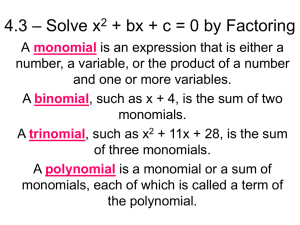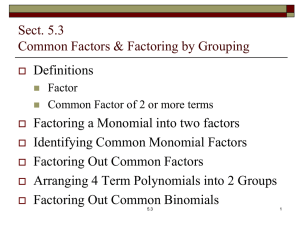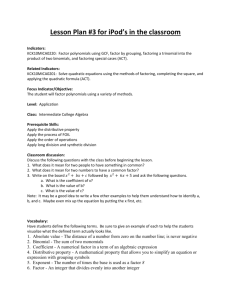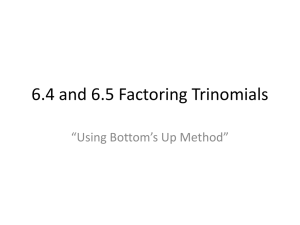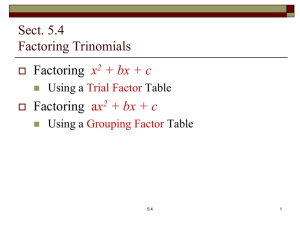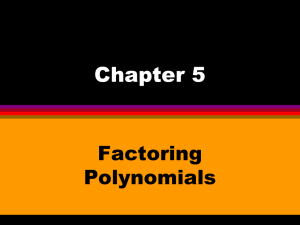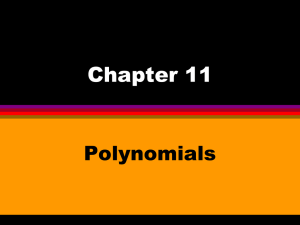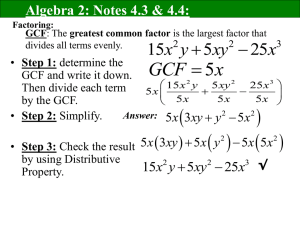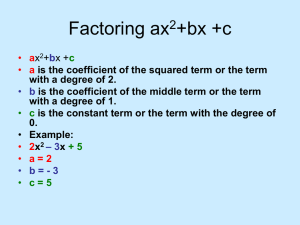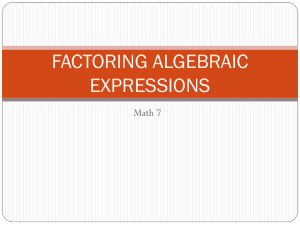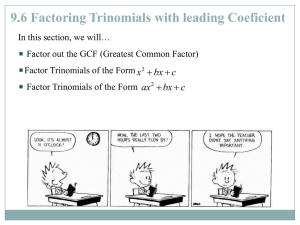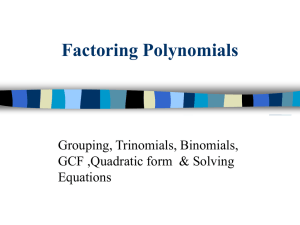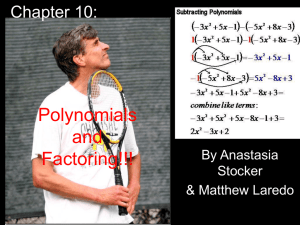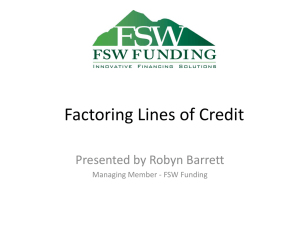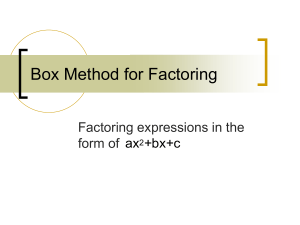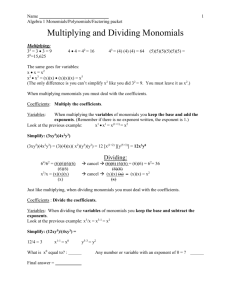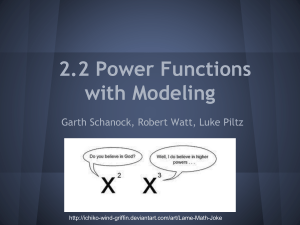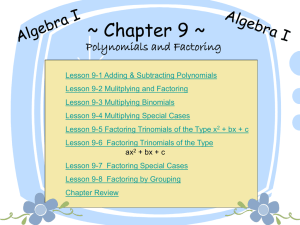ppt - Eudora Schools
advertisement
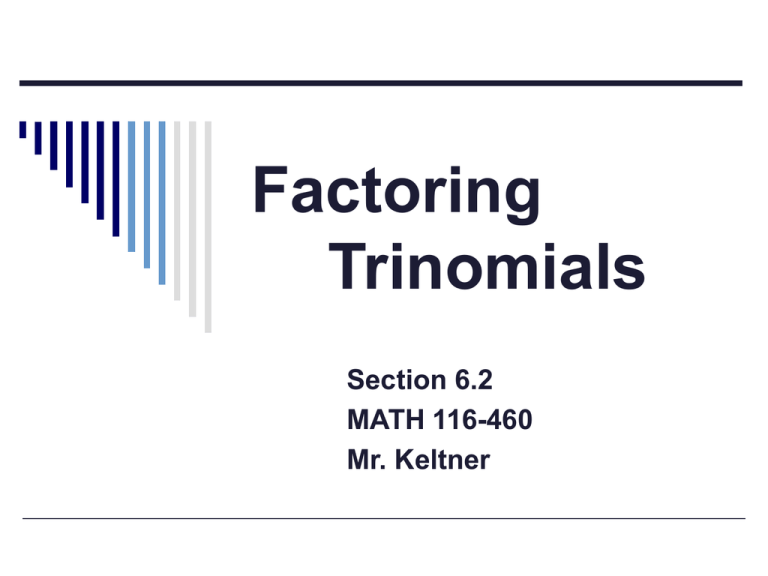
Factoring Trinomials Section 6.2 MATH 116-460 Mr. Keltner Monomials and more monomials A monomial is an algebraic expression that is either a number, a variable, or the product of a number and a variable. A binomial, such as x - 7, is the sum of two monomials. A trinomial, such as x2 + 8x +15, is the sum of three monomials. A polynomial is the group that all of these expressions belong to. Monomials, binomials, and trinomials are just specific types of polynomials. Factoring Quadratic Expressions When we worked with multiplying expressions such as 2x and (x + 3), we wrote the product as a sum, like 2x2 + 6x. This used the Distributive Property. Factoring reverses the process, allowing us to write the sum as a product. To factor an expression containing two or more terms, try factoring out the greatest common factor (GCF). Example 1 Factor each quadratic expression, by finding the greatest common factor (GCF) of the expression. 27c2 - 18c 5z(2z + 1) – 2(2z + 1) Factoring algebraically Factor x2 + 3x – 10. Look for a pattern. We will notice that the sums and products in the x-term and constant term are related to the factors of the last term in the factored expression in the form (x -b)(x - c). This observation gives us a rule for factoring quadratic expressions of the form x2 + bx + c. Factoring 2 x + bx + c To factor an expression of the form ax2 + bx + c where a = 1, look for integers j and k such that j•k = c and j + k = b. Then factor the expression. x2 + bx + c = x2 + (j + k)x + (j • k) = (x + j) (x + k) Example 2 Factor each quadratic expression. x2 + 12x + 27 n2 - 4n - 12 y2 + 10y - 24 If there’s another number in front… Check for a monomial that can be factored out of each term of the expression. Example 3: Factor the expressions 3n3 - 18n2 + 24n y5 + 3y4 - 18y3 Don’t get overwhelmed by seeing several variables By keeping the FOIL method in mind and knowing where the last term comes from, factoring trinomials with more than one variable is easier than it looks. It is always a good idea to look for a monomial factor. Example 4: Factor the expressions x2 + 9xy + 20y2 x3 + 4x2y - 21xy2 2 ax Factoring + bx + c when a≠1: Trial and Error In the case where our leading coefficient is NOT 1 and we cannot factor a monomial out of the expression,consider The factors of the ax2 term The factors of the c term Keep in mind some behaviors of odd and even numbers: Even + Even = Even = Odd + Odd Even • Even = Even = Even • Odd Odd • Odd = Odd Example 5: Factoring by Trial and Error Factor each expression and check by using the FOIL method. 6t2 - 19t + 10 56n4 - 70n3 + 21n2 6x3 - 28x2y - 48xy2 Factoring by Grouping To factor a trinomial of the form ax2 + bx + c, where a≠1, by using grouping: Look for a monomial GCF in all the terms. Factor it out, is possible. Find two factors of ac (are divisible by one of the numbers a or c) which happen to add up to b. Write the polynomial with four terms so that the bx term is written as the sum of two like terms with coefficients that we used in step 2. Factor by grouping! Factoring by Grouping: Your turn Factor each expression by grouping. 10x2 - 19x + 6 36x4y + 3x3y - 60x2y Using substitution for something better to look at Substitution Some rather ugly polynomials are actually in the form ax2 + bx + c and can be factored by using a method called substitution. This takes advantage of taking a messy part of the expression and replacing it with a single variable. Example 7: Factoring by Substitution Factor each expression by using substitution: 24(t + 2)2 - 22(t + 2) + 3 15n8 - 19n4 + 6 Assessment Pgs. 403-404: #’s 10-85, multiples of 5
